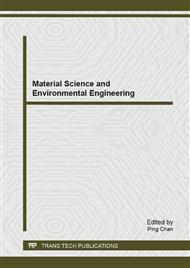[1]
S.M. Duguay, K. Arii, M. Hooper and M.J. Lechowicz: Environmental Monitoring and Assessment 67(2001), pp.97-108.
DOI: 10.1023/a:1006464511158
Google Scholar
[2]
A.G. Rhoads, S.P. Hamburg, T.J. Fahey, T.G. Siccama, E.N. Hane, J. Battles, C. Cogbill, J. Randall and G. Wilson: Canadian Journal of Forest Research 32 (2002), p.1763–1775.
DOI: 10.1139/x02-089
Google Scholar
[3]
A. Hopkin, T. Williams, R. Sajan, J Pedlar and C. Nielsen: Forestry Chronicle 79 (2003), p.47–53.
DOI: 10.5558/tfc79047-1
Google Scholar
[4]
C. Nielsen, O. Van Dyke and J. Pedlar: Forestry Chronicle 79(2003), p.70–74.
Google Scholar
[5]
J.L. Morris and W.D. Ostrofsky: Northern Journal of Applied Forestry 22 (2005), p.262–267.
Google Scholar
[6]
J.M. Tang, C.W. Sun, J.H. Dai, H.G. Liu and X. Y. Zhen: Scientia Silvae Sinicae 44(11) (2008), pp.2-10, In Chinese.
Google Scholar
[7]
Y.Z. Xu, X.M. Sun, C.W. Sun, C.Q. Du, B.R. Chen and D.Q. Zhang: Scientia Silvae Sinicae 44(11) (2008), pp.11-17, In Chinese.
Google Scholar
[8]
L. Xue, Y.J. He, M. Qu, M. Wu and Y. Xu: Acta Phytoecologic Sinica 29(2005), pp.415-421, In Chinese.
Google Scholar
[9]
M.A. Fosberg: Heat and water vapour flux in conifer litter and duff: a theoretical model. USDA Forest Service Research Paper RM-152, Fort Collins, Colorado, (1975).
Google Scholar
[10]
F. Bussière and P. Cellier: Agricultural and forest meteorology 68(1994), pp.1-28.
Google Scholar
[11]
J.D. Helvey and J.H. Patric, in: Research on interception losses and soil moisture relationships, edited by W.T. Swank, D.A. Crossley, Forest hydrology and ecology at Coweeta. Springer-Verlag, New York, p.129–137 (1988).
DOI: 10.1007/978-1-4612-3732-7_9
Google Scholar
[12]
W.M. Putuhena and I. Cordery: Journal of Hydrology 180(1996), pp.283-299.
Google Scholar
[13]
J.I. Pitman: Journal of Hydrology 111 (1989), p.281—291.
Google Scholar
[14]
Y.Q. Peng, L. Xue, H. Cao, X.R. Ren and L.L. Liang: Journal of Soil and Water Conservation 20 (2006), pp.189-191, 200, In Chinese.
Google Scholar
[15]
L. Xue: Forest Ecology and Management 89 (1996), p.115–123.
Google Scholar
[16]
W.J. Shen, S.L. Peng, G.Y. Zhou, Y.B. Lin and Z.A. Li: Acta Ecologica Sinica 21(2001), p.846–850, In Chinese.
Google Scholar
[17]
J.H. Cheng, H.J. Zhang, Y.H. Shi, Y. Cheng, S.L. Qi, F. He and L. Pan: Chinese Journal of Applied Ecology 14(2003), p.1825—1828, In Chinese.
Google Scholar
[18]
H.J. Zhang, J.H. Cheng, Y.H. Shi, S.L. Qi, Y. Cheng, L. Pan and F. He: Journal of Soil and Water Conservation 17(3) (2003), p.55–58, 123 In Chinese.
Google Scholar
[19]
X.D. Liu, Q.X. Wu and H.Y. Zhao: Journal of Soil and Water Conservation 5(1991), p.87—91, In Chinese.
Google Scholar
[20]
S.M. Dabney: Journal of Soil and Water Conservation 53 (1998), p.207–213.
Google Scholar
[21]
Z.Q. Hao and L.H. Wang: Chinese Journal of Applied Ecology 9(3) (1998), pp.237-241, In Chinese.
Google Scholar
[22]
J.H. Yang, Y.T. Z hang, H.Y. Li, and J.B. Xia: Journal of Soil and Water Conservation 17(2003), p.141–144, In Chinese.
Google Scholar
[23]
H.J. Zhang, J.H. Cheng, X.X. Yu, D.S. Zhang and Y.T. Zhao: Scientia Silvae Sinicae 39(5) (2003), pp.147-151, In Chinese.
Google Scholar
[24]
Y.C. Luo, S.H. Han, H.C. Wang, J.M. Liu, J. Wei and G. Wu: Chinese Journal of Applied Ecology 15(6) (2004), p.919—923, In Chinese.
Google Scholar


